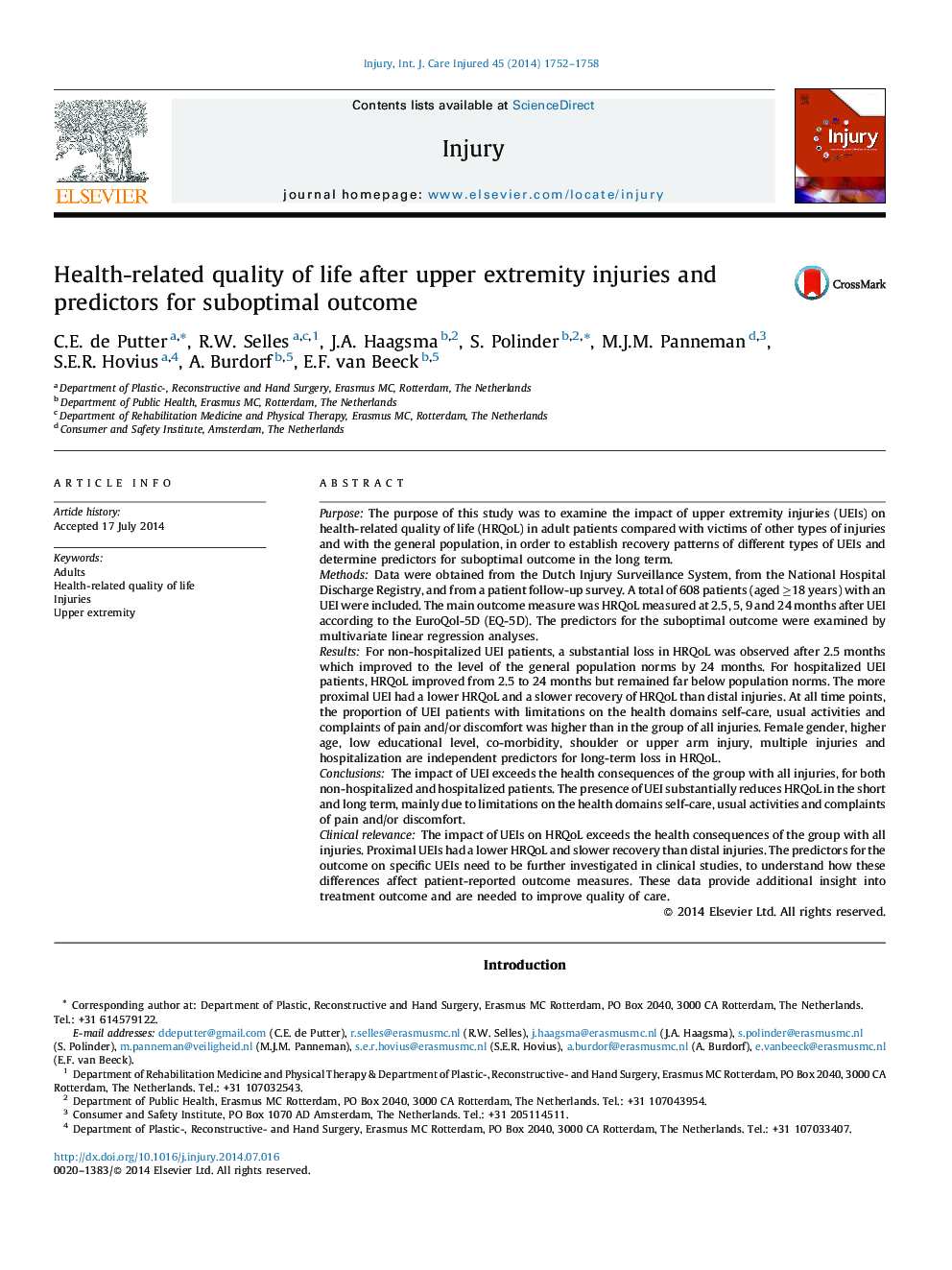| کد مقاله | کد نشریه | سال انتشار | مقاله انگلیسی | نسخه تمام متن |
|---|---|---|---|---|
| 6083879 | 1206010 | 2014 | 7 صفحه PDF | دانلود رایگان |
PurposeThe purpose of this study was to examine the impact of upper extremity injuries (UEIs) on health-related quality of life (HRQoL) in adult patients compared with victims of other types of injuries and with the general population, in order to establish recovery patterns of different types of UEIs and determine predictors for suboptimal outcome in the long term.MethodsData were obtained from the Dutch Injury Surveillance System, from the National Hospital Discharge Registry, and from a patient follow-up survey. A total of 608 patients (aged â¥18 years) with an UEI were included. The main outcome measure was HRQoL measured at 2.5, 5, 9 and 24 months after UEI according to the EuroQol-5D (EQ-5D). The predictors for the suboptimal outcome were examined by multivariate linear regression analyses.ResultsFor non-hospitalized UEI patients, a substantial loss in HRQoL was observed after 2.5 months which improved to the level of the general population norms by 24 months. For hospitalized UEI patients, HRQoL improved from 2.5 to 24 months but remained far below population norms. The more proximal UEI had a lower HRQoL and a slower recovery of HRQoL than distal injuries. At all time points, the proportion of UEI patients with limitations on the health domains self-care, usual activities and complaints of pain and/or discomfort was higher than in the group of all injuries. Female gender, higher age, low educational level, co-morbidity, shoulder or upper arm injury, multiple injuries and hospitalization are independent predictors for long-term loss in HRQoL.ConclusionsThe impact of UEI exceeds the health consequences of the group with all injuries, for both non-hospitalized and hospitalized patients. The presence of UEI substantially reduces HRQoL in the short and long term, mainly due to limitations on the health domains self-care, usual activities and complaints of pain and/or discomfort.Clinical relevanceThe impact of UEIs on HRQoL exceeds the health consequences of the group with all injuries. Proximal UEIs had a lower HRQoL and slower recovery than distal injuries. The predictors for the outcome on specific UEIs need to be further investigated in clinical studies, to understand how these differences affect patient-reported outcome measures. These data provide additional insight into treatment outcome and are needed to improve quality of care.
Journal: Injury - Volume 45, Issue 11, November 2014, Pages 1752-1758
